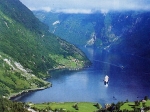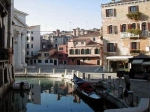
 The Netherlands is the European part of the Kingdom of the Netherlands , a parliamentary democracy under a constitutional monarch . It is located in northwestern Europe and borders the North Sea , Belgium and Germany . The country is often referred to by the name Holland , although this is incorrect; Holland was the economic powerhouse during the time of the United Provinces ( 1581 – 1795 ), during the Napoleonic era it was split into North and South Holland (refer to subsection on names ).
The Netherlands is the European part of the Kingdom of the Netherlands , a parliamentary democracy under a constitutional monarch . It is located in northwestern Europe and borders the North Sea , Belgium and Germany . The country is often referred to by the name Holland , although this is incorrect; Holland was the economic powerhouse during the time of the United Provinces ( 1581 – 1795 ), during the Napoleonic era it was split into North and South Holland (refer to subsection on names ).
The Netherlands is one of the most densely populated and geographically low-lying countries in the world (its name literally means the Low Countries ) and is famous for its dikes , windmills , wooden shoes , tulips , and perceived social tolerance. Its liberal policies are often mentioned abroad. The country is host to the International Court of Justice . Amsterdam is the official capital as stated by the constitution. The Hague is the administrative capital (the seat of government), the home of the Queen, and the location for most of the embassies.
Geography
A remarkable aspect of the Netherlands is the flatness of the country. About half of its surface area is less than 1 meter above sea level, and large parts of it are actually below sea level . An extensive range of dikes and dunes protect these areas from flooding. Numerous massive pumping stations keep the ground water level in check. The highest point, the Vaalserberg , in the southeasternmost point of the country, is 321 m above sea level. A substantial part of the Netherlands, e.g., all of Flevoland and large parts of Holland , has been reclaimed from the sea. These areas are known as polders .
In years past, the Dutch coastline has changed considerably due to human intervention and natural disasters. Most notable in terms of land loss are the 1134 storm, which created the archipelago of Zeeland, and the 1287 storm, which killed 50,000 people and created the Zuyderzee (now known as the IJsselmeer ), giving Amsterdam direct access to the sea. The St. Elisabeth flood of 1421 and the mismanagement in its aftermath destroyed a newly reclaimed polder, replacing it with the 72 km² Biesbosch tidal floodplains. The most recent storm disaster occurred in 1953 , during which large parts of Zeeland were flooded and 1,836 people were killed.
The disasters were partially man-made; the people drained relatively high lying swampland for use as farmland. This drainage caused the fertile peat to compress and the ground level to drop, locking the landusers in a vicious circle whereby they would lower the water level to compensate for the drop in ground level, causing the underlying peat to compress even more. The vicious circle is unsolvable and remains to this day. Up until the 19th century peat was dug up, dried, and used for fuel, further adding to the problem.
To guard against floods, a series of defenses against the water was contrived. In the first millennium, villages and farmhouses were build on man-made hills called "terps". Later these terps were connected by dikes. In the 12th century , local government agencies called "waterschappen" or "hoogheemraadschappen" (English "waterbodies") started to appear, whose job it was to maintain the water level and to protect a region from floods. (The waterbodies are still around today performing the exact same function.) As the ground level dropped, the dikes by necessity grew and merged into an integrated system. In the 13th century , windmills came into use to pump water out of the areas by now below sea level. The windmills were later used to drain lakes, creating the famous polders . In 1932 , the Afsluitdijk (English "Barrier Dam") was completed, blocking the former Zuyderzee off from the North Sea and thus creating the IJsselmeer. It became part of the larger Zuiderzee Works in which four polders totaling 1,650 km² were reclaimed from the sea.
After the 1953 disaster, the Delta project , a vast construction effort designed to end the threat from the sea once and for all, was launched in 1958 and largely completed in 2002 . The official goal of the Delta project was to reduce the risk of flooding in Holland to once per 10,000 years. (For the rest of the country, the protection-level is once per 4,000 years). This was achieved by raising 3,000 km of outer sea-dikes and 10,000 km of inner, canal, and river dikes to "Delta" height, and by closing off the sea estuaries of the Zeeland province. New risk assessments occasionally incur additional Delta project work in the form of dike re-enforcements. The Delta project is the single largest construction effort in human history and is considered by the American Society of Civil Engineers as one of the seven wonders of the modern world




